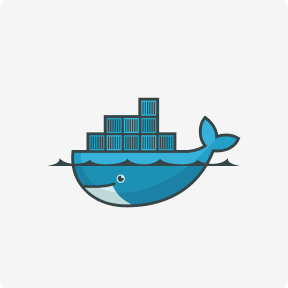We have a reliability group that manages uptime and reliability for GitLab.com, a quality department, and a distribution team, just to name a few. The way that we make all these pieces fit together is through our commitment to transparency and our visibility through the entire SDLC. But we also tweak (i.e. iterate on) this structure regularly to make everything work.
- An effective automation strategy is also reliant on the technology and tools in use.
- Security training involves training software developers and operations teams with the latest security guidelines.
- Logging, monitoring and alerting covers the domain of understanding and managing the health and security of an application’s operational state.
- Dev teams continue to do their work, with DevOps specialists within the dev group responsible for metrics, monitoring, and communicating with the ops team.
- For example, developers can use AWS CloudHSM to demonstrate compliance with security, privacy, and anti-tamper regulations such as HIPAA, FedRAMP, and PCI.
- In large organizations, particularly those with several offices, security champions are the ones who make sure that employees communicate up-to-date security information throughout their departments.
Read our slideshow about the best tips to create an IT team to succeed in your DevOps team. This is one of the top DevOps Trends teams should follow; read the full blog to learn more.
DevOps Team Structure
As a result, companies deliver secure software faster while ensuring compliance. Continuous monitoring in DevOps provides real-time feedback on the performance of an application in production. As development gets faster in DevOps, QA needs to match this pace to run automated tests.

At its core, DevOps focuses on blurring the line between development and operations teams, enabling greater collaboration between developers and system administrators. Metrics allows DevOps teams to measure and assess collaborative workflows and track progress of achieving high-level goals including increased quality, faster release cycles, and improved application performance. Continuous integration and continuous delivery (CI/CD) is a modern software development practice that uses automated build-and-test steps to reliably and efficiently deliver small changes to the application.
Other organizational DevOps schemes include:
If an organization achieves these goals, it’s irrelevant that it looks like an anti-pattern from the outside. If you’re expanding the number of teams delivering software, Platform Engineering offers consistency without stifling team choice. Because your teams don’t have to use the platform, it benefits from competition with other software delivery pathways. A team with blinkers is performing well against many of the PATHS skills, but there are massive blind spots. The lack of automation isn’t clear during regular operation, but it takes a long time to deploy a fix when you discover a critical production issue. You might use BizOps to highlight a disconnect between the business and the teams supplying their tools.
A DevOps engineer focuses on deploying updates to an application as quickly as possible with limited disruption to the user experience. Making security an equal consideration alongside development and operations is a must for any organization involved in application development and distribution. When you integrate DevSecOps and DevOps, every developer and network administrator has security at the front of their mind when developing and deploying applications. DevSecOps is about creating a culture where security is a part of everyone’s job, not just the people specifically working in security roles.
Develop new features securely
This includes capturing what events have occurred (logging), providing information about those events (monitoring) and informing the appropriate parties when those events indicate issues to be resolved (alerting). Application teams need significant autonomy to manage the health of their own applications, but the enterprise at large also needs awareness of the health of applications within it. This is not to say that every employee in your organization needs to know the ins and outs of DevOps and software requirements. Nonetheless, it is worth building strategic connections between the core DevOps team and colleagues in nontechnical roles. Not everyone will understand what DevOps means or why the organization should invest in the new tools, processes and people necessary to support it.

A DevOps engineer is responsible for designing the right infrastructure required for teams to continuously build and deliver products. The engineer identifies project requirements and KPIs and customizes the tool stack. In addition, the engineer is involved in team composition, project activities, defining and setting the processes for CI/CD pipelines and external interfaces. With Quality Engineering and Quality Assurance going hand in hand, QA teams are happier now as quality is not just their job, but it turns into DevOps Team responsibility. DevOps is an innovative methodology that offers a set of practices that brings development and operations teams together to collaborate seamlessly and continuously to deliver quality products faster and better.
Four critical DevOps metrics
Security alerts, especially those from automated scanning tools, might include false positives. It can be complex to ask developers to examine and attend to those issues. Automation ensures that developers and security professionals use the tools and processes in a repeatable, reliable, and consistent way. It is essential devsecops team structure to know which security processes and activities may be entirely automated and which methods need a degree of manual intervention. Automation is essential when finding a middle ground between security, speed, and scale. Automating security processes and tools ensures that teams adhere to DevSecOps best practices.

Best of all, DevSecOps will allow you to achieve these ends at a pace that mirrors DevOps. The business will innovate more quickly because security is integral to the process, not a hindrance to it. The result will be less risk of data breaches, more secure applications, and continuous security monitoring of cloud resources and services. Platform teams work with development teams to create one or more golden pathways. These pathways don’t prevent teams from using something else but offer supported self-service products that help teams improve delivery capability.
Common responsibilities of DevOps Teams (DevOps Responsibilities)
In this model, development teams provide logs and other artifacts to the SRE team to prove their software meets a sufficient standard for support from the SRE team. Development and SRE teams collaborate on operational criteria and SRE teams are empowered to ask developers to improve their code before production. An image in the context of this framework is the definition of a component of computing infrastructure that can be instantiated for use by the platform or by application owners on that platform. Concretely, an image could be a VM image, AMI, a container image or definition, or similar products. Image management refers to lifecycle around the creation, maintenance, and delivery of those images to application developers. DevOps requires sys admins who are competent in IT operations, but ideally, they are more than that.
It is not just abstracting hardware capabilities but also involves other processes such as automation, orchestration, APIs, containerization, security, routing, UX design, etc. Public, private, hybrid, and multi-cloud are a few examples of popular cloud architectures. DevOps augmented by cloud technology enables you to build highly scalable and flexible applications using different architectures such as Microservices, serverless architecture, and cloud architecture.
DevSecOps compared to agile development
In large organizations, particularly those with several offices, security champions are the ones who make sure that employees communicate up-to-date security information throughout their departments. Furthermore, security champions https://www.globalcloudteam.com/ can assist with real-world security simulations and training. Developers must understand compliance checks, threat models, and have a working understanding of how to assess risks, exposure and establish security measures.
